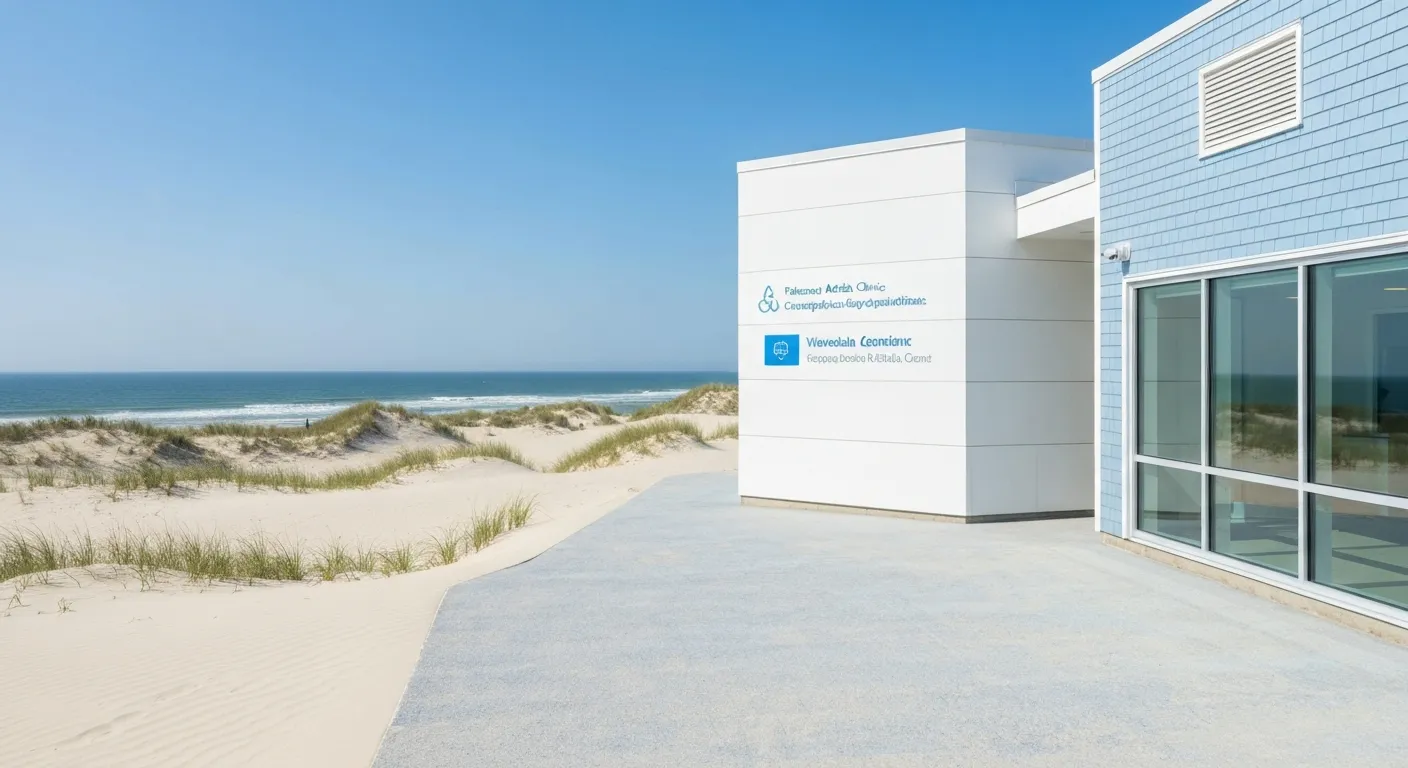
December 16, 2025
Explore coolsculpting chin fat: A guide to sharper definition
Want to tackle coolsculpting chin fat? This guide explains the procedure, pricing, downtime, and expected results to help you decide on a sharper jawline.
Oct 24, 2025

Breast surgery encompasses a range of procedures aimed at diagnosing, treating, or altering the breasts for medical or cosmetic reasons. Whether addressing breast cancer, benign tumors, preventive measures, or aesthetic goals, breast surgery involves carefully tailored options to suit individual health needs and personal preferences. This article explores the various types of breast surgery, their procedures, risks, and recovery processes to provide a thorough understanding for those considering or preparing for these interventions.

Breast surgeries can be broadly classified into diagnostic, therapeutic, and cosmetic procedures. Each category addresses different patient needs—from diagnosing potential breast abnormalities to treating cancer, and enhancing or restoring breast appearance. For more details, see Types of Breast Surgery.
Diagnostic breast surgeries focus on identifying cancer or other abnormalities. Common biopsy types include:
Therapeutic breast surgeries aim to remove cancerous tissues and assess spread:
Cosmetic breast surgeries enhance breast size, shape, or symmetry and include:
Men may undergo breast surgery primarily for:
Breast surgery encompasses a wide range of interventions tailored to diagnostic needs, effective cancer treatment, appearance goals, and managing conditions unique to both women and men. For a comprehensive guide to all breast surgery options, visit Breast Surgery Options.

Preparation for breast surgery involves a comprehensive medical evaluation to ensure patient safety and optimal surgical outcomes. This includes blood tests before surgery, chest X-rays, electrocardiograms (ECG), and physical examinations to assess fitness for anesthesia and surgery. Patients are encouraged to provide detailed medical histories and discuss current medications and supplements with healthcare providers. Certain medications and supplements, especially those that affect blood clotting such as aspirin, ibuprofen, vitamin E, fish oil, turmeric, and garlic, should be paused as advised, often about 10 days to weeks prior to surgery to reduce bleeding risks.
Lifestyle modifications play a vital role. Smoking cessation before surgery at least four weeks before surgery significantly reduces complications related to wound healing and anesthesia. Maintaining a healthy diet rich in protein and proper hydration supports recovery. Patients are also advised to engage in light physical activity and breathing exercises preoperatively to enhance overall health and lung function.
Pre-surgery consultations are fundamental for informed decision-making and planning. During these sessions, patients discuss surgical options, potential risks, and side effects with their surgeons. Detailed explanations of the procedures, recovery timelines, and postoperative care plans are provided, including the use of surgical drains, incision care, and activity restrictions post-surgery. Patients should ask questions and clarify any concerns, and surgeons often take photographs and measurements for medical records.
Emotional and logistical preparation is equally important. Patients are encouraged to arrange for transportation and assistance at home, as anesthesia effects and limited mobility may restrict their ability to care for themselves immediately after surgery. Preparing the home environment to facilitate recovery—like organizing meals, clothing, and personal items—is recommended. Emotional support resources, including counseling services and support groups, are suggested to assist patients through the often challenging psychological impacts of breast surgery.
Overall, careful preoperative preparation involving medical, lifestyle, educational, and emotional aspects enhances surgical safety and recovery success. For more detailed guidance, see Preparing for Lumpectomy or Mastectomy.

Breast cancer surgery offers several options tailored to the patient's specific condition. The main surgical choices include:
Lumpectomy (Breast-Conserving Surgery): This procedure removes the cancerous tumor along with a small margin of surrounding healthy tissue, preserving most of the breast. It is often used in early-stage breast cancer and typically followed by radiation therapy to reduce the risk of recurrence.
Mastectomy: This involves removing the entire breast and may be necessary for larger or multiple tumors, or based on patient preference. Types include total (simple) mastectomy, skin-sparing, nipple-sparing, and modified radical mastectomy. Some patients opt for mastectomy to decrease cancer risk when they have genetic predispositions.
Lymph Node Surgery: To evaluate if cancer has spread, surgeons perform sentinel lymph node biopsy, which removes the first few lymph nodes draining from the tumor area. If cancer is detected in these nodes, axillary lymph node dissection, a more extensive removal, may be indicated. This assessment guides the need for further treatments such as chemotherapy or radiation.
Preventive (Prophylactic) Mastectomy: For patients at high genetic risk, such as those with BRCA1 or BRCA2 mutations, bilateral risk-reducing mastectomy may be advised. This surgical option significantly lowers the likelihood of developing breast cancer.
Choosing the appropriate surgery considers tumor size, location, cancer stage, breast size, genetic risk factors, prior treatments, and personal preferences. Integration with other therapies—such as chemotherapy, hormone therapy, targeted therapy, and radiation—is planned based on surgical findings and overall treatment strategy.
This multidisciplinary approach ensures optimal cancer control while addressing cosmetic outcomes and patient quality of life.
Common cosmetic breast surgeries include breast augmentation, breast lift, breast reduction, and gynecomastia surgery in men. Breast augmentation uses implants or fat transfer to increase breast size and enhance shape. Implants can be silicone or saline, placed under the muscle or breast tissue, through incisions made in discreet locations such as under the breast or around the nipple.
A breast lift, or mastopexy, raises and tightens the existing breast tissue without increasing breast size, correcting sagging and reshaping the breast contour. Breast reduction surgery removes excess fat, glandular tissue, and skin to alleviate physical discomfort and achieve a proportionate breast size, often improving posture and reducing back or neck pain.
Gynecomastia surgery is designed to treat excess breast tissue and fat in men, using techniques such as excision and liposuction to create a flatter, more masculine chest appearance.
Selecting a board-certified plastic surgeon with extensive experience in breast procedures is crucial for achieving desirable, safe outcomes. Patients should have thorough consultations to discuss goals, procedure details, implant options, and recovery expectations. Learn more about choosing a board-certified plastic surgeon.
Cosmetic breast surgeries significantly enhance body image, self-esteem, and overall confidence. However, they carry risks including infection, bleeding, anesthesia complications, capsular contracture (scar tissue hardening around implants), changes in nipple or breast sensation, implant rupture, scarring, and the possibility of future revision surgeries. Awareness and careful planning with a qualified provider are essential for informed decision-making and satisfaction.

Breast reconstruction is designed to restore the shape and appearance of the breast following mastectomy. There are two primary reconstruction techniques: implant-based breast reconstruction and autologous tissue breast reconstruction.
This method uses silicone or saline implants placed either under the chest muscle or breast tissue. Techniques often involve the use of tissue expanders to gradually stretch the skin before placing permanent implants. Acellular dermal matrix (ADM) may be used to support and position implants effectively. Implant-based reconstruction can be performed immediately during mastectomy or delayed based on patient preference and medical considerations.
Also known as flap reconstruction, this approach uses tissue from other body parts such as the abdomen (DIEP or TRAM flaps), back (latissimus dorsi flap, thighs, or buttocks. The tissue includes skin, fat, and sometimes muscle, providing a natural look and feel. Free flap techniques involve detaching tissue and reattaching blood vessels microsurgically, while pedicle flaps keep the original blood supply intact.
Reconstruction may be immediate, occurring simultaneously with mastectomy, or delayed if additional treatments like radiation are required. Immediate reconstruction offers the benefit of fewer surgeries and psychological advantages but may not be suitable for all patients.
After the breast mound is reconstructed, nipple-areola complex reconstruction can be performed using local tissue flaps or tattooing to create a natural appearance. This step often follows once the breast shape has healed. More information on nipple reconstruction methods and tattooing.
Potential risks include infection, scarring, capsular contracture (for implants), flap failure, changes in breast and nipple sensation, and asymmetry. Despite these risks, reconstruction generally improves body image, self-esteem, and quality of life. Most techniques require careful patient selection and follow-up care to optimize outcomes. For details on risks and complications, see Risks of breast surgery.
Breast surgery is conducted under either general anesthesia or local anesthesia combined with sedation. The choice depends on the specific procedure involved. General anesthesia is more common for extensive surgeries like mastectomy and reconstruction, while local anesthesia with sedation may suffice for smaller procedures.
Incision sites vary considerably. Common locations include beneath the breast (inframammary fold), around the nipple (periareolar), and within the armpit (transaxillary). These incision options help optimize aesthetic outcomes and surgical access, as described in breast augmentation procedure.
For cancer surgeries, precise tumor targeting is crucial. Intraoperative imaging and localization techniques such as wire localization or radioactive seed localization guide surgeons to accurately remove non-palpable tumors. These techniques improve excision accuracy and reduce the removal of healthy tissue.
Surgical drains are frequently used after procedures like mastectomy, breast reconstruction, or reduction. Their purpose is to prevent fluid buildup by draining excess fluids from the surgical site. Drainage tubes typically remain in place for 1 to 3 weeks or until output decreases sufficiently, helping reduce complications.
Regarding surgical settings, many breast surgeries, including lumpectomies and biopsy procedures, are performed as outpatient day surgeries, allowing patients to return home the same day. More complex operations such as mastectomy with immediate reconstruction can require hospital stays ranging from one to several days (hospital stay after breast surgery).
Surgical durations can vary widely: lumpectomies commonly require about one to two hours, whereas comprehensive procedures combining cancer removal with reconstruction may last over five hours. Overall, surgical approaches aim to balance effective treatment with minimizing recovery time and maximizing cosmetic results (Breast cancer surgery overview).

Recovery after breast surgery varies depending on the procedure performed. For those undergoing a lumpectomy, recovery is relatively quick, typically allowing a return to normal activities within 5 to 10 days. Mastectomy patients generally require a longer healing period of about 3 to 4 weeks. When breast reconstruction is involved, recovery may extend to 6 to 8 weeks or more.
Pain and discomfort are common after breast surgery. Initially, patients may experience soreness, tightness, and swelling. Pain is usually managed effectively with prescribed medications such as non-steroidal anti-inflammatory drugs or opioids when necessary. Many patients shift to over-the-counter pain relievers after the first few days as their pain decreases.
Surgical drains are often placed, especially after mastectomy or reconstruction, to prevent fluid buildup. These drains typically remain for 2 to 3 weeks until the drainage reduces. Wound care includes keeping incisions clean and dry, using waterproof dressings as advised, and monitoring for signs of infection. Patients should avoid soaking in baths until the wounds are healed.
Patients are advised to avoid heavy lifting, strenuous upper body activity, and driving until cleared by their healthcare provider, generally for 4 to 6 weeks. Gentle arm and shoulder exercises are encouraged early to prevent stiffness and improve mobility, often supervised by physiotherapists. Wearing supportive surgical bras aids comfort and healing.
Patients should contact their healthcare provider if they notice excessive bleeding, persistent pain, fever, redness or swelling around the incision, wound drainage changes, or if the wound opens. Follow-up visits within 1 to 2 weeks post-surgery are crucial for healing assessment and further treatment planning.
This structured recovery plan helps ensure the best outcomes and supports a safe and smooth return to daily life.
Breast surgery carries several potential risks such as complications from anesthesia, bleeding, infection, pain, scarring, and changes in sensation. These risks are common regardless of the surgery type and are carefully discussed by healthcare providers before the procedure. For more details, see Risks of breast surgery and Risks and benefits of breast surgery.
Breast implants can lead to unique complications including capsular contracture, where scar tissue hardens around the implant causing discomfort or distortion. Implant rupture or leakage is another concern, often requiring imaging to detect silent ruptures. There is also a rare but serious risk of breast implant-associated anaplastic large cell lymphoma (BIA-ALCL). Other issues include asymmetry, changes in breast or nipple sensation, and cosmetic problems like wrinkling or implant visibility. Learn more about these at Risks and complications of breast implants and Breast augmentation safety and risks.
Long-term effects can include persistent numbness, especially after mastectomy, and lymphoedema, a swelling caused by lymphatic fluid buildup following lymph node removal. Post-mastectomy pain syndrome is another chronic condition involving ongoing pain or nerve discomfort. These effects require careful management and sometimes physical therapy. Further information is available at Postoperative breast care and Lymphedema management after breast surgery.
Psychological impact is significant; patients may experience changes in body image, anxiety, or depression related to the surgery and recovery. Emotional support from medical teams, counselors, and peer support groups plays a crucial role in coping. Open communication about expectations and follow-up care helps with adjustment during healing. For support resources, see Emotional support for breast surgery patients and Psychosocial support after breast surgery.
Thorough consultations ensure patients understand risks, benefits, and alternatives of breast surgery. Education empowers individuals to make choices aligned with their health goals and personal preferences, leading to better satisfaction and emotional outcomes throughout the recovery journey. More about this is available at Breast surgery consultation and preparation and Informed decision-making for breast surgery.
Breast surgery is a multifaceted field addressing medical and cosmetic needs through a diverse array of procedures. Understanding the types of surgeries, from diagnostic biopsies and cancer treatments to cosmetic enhancements and reconstructive techniques, empowers patients to make informed decisions. Preparation, careful surgical planning, and tailored postoperative care are crucial to optimize outcomes and manage risks effectively. Recovery varies depending on the procedure but generally includes physical and emotional adaptation, supported by healthcare professionals. Awareness of potential complications and availability of support systems contribute to a smoother healing experience. Ultimately, breast surgery offers restorative options that can improve health, appearance, and quality of life for many individuals.

December 16, 2025
Want to tackle coolsculpting chin fat? This guide explains the procedure, pricing, downtime, and expected results to help you decide on a sharper jawline.

December 16, 2025
Ensuring Patient Safety Through Rigorous Accreditation on Cape Cod

December 15, 2025
Considering a subtle enhancement? Learn what is lip flip botox, how it differs from fillers, the costs involved, and what the procedure is really like.